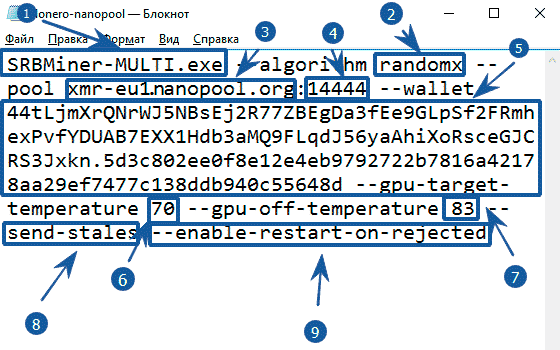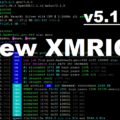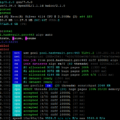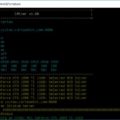

How to mine Monero (XMR) on RandomX algorithm
On November 30, after the hard fork, Monero (XMR) will work hard on block 1978433 to switch to the new RandomX algorithm. The upcoming fork will change the current CryptoNight R mining algorithm to the new Random X PoW algorithm, essentially transferring the coin mining to the CPU.
There are already several miners mining coins using the RandomX algorithm, which you can use now:
XMR-STAK-RX
The developers of the XMR-STAK program released the initial version to support the RandomX algorithm – the xmr-stak-rx program.
Download and configure XMR-STAK-RX:
In the new version there is no commission for development, it will probably be added later. This release only supports various variants of the RandomX algorithm.
How to run RandomX mining on XMR-STAK-RX?
- Download and unzip precompiled binary (.EXE) files to a new folder
- Change the currency parameter in pools.txt to “currency”: “randomx”, example pool configuration
- Run xmr-stak-rx via bat file
Launch XMR-STAK-RX
You can run the program through the bat file too:
Example batch file settings:
xmr-stak-rx.exe -o xmr-eu.dwarfpool.com:8050 -u 44tLjmXrQNrWJ5NBsEj2R77ZBEgDa3fEe9GLpSf2FRmhexPvfYDUAB7EXX1Hdb3aMQ9FLqdJ56yaAhiXoRsceGJCRS3Jxkn.5d3c802ee0f8e12e4eb9792722b7816a42178aa29ef7477c138ddb940c55648d.rig1 -p x --noCPU
pauseIf you do not want to mine Monero / Random X after forking on video cards, run xmr-stak-rx once before the fork and let the miner create amd.txt and / or nvidia.txt configurations. Edit both files and set “gpu_threads_conf”: [] to disable the video cards and leave only the processor.
If the application does not start properly, make sure the Visual Studio libraries are installed. You can download them from
XMRig
Similarly, you can use the Xmrig program.
Download and configure XMRig:
An example of a batch file for processors:
:start xmrig -a randomx -o pool.supportxmr.com:5555 -u 44tLjmXrQNrWJ5NBsEj2R77ZBEgDa3fEe9GLpSf2FRmhexPvfYDUAB7EXX1Hdb3aMQ9FLqdJ56yaAhiXoRsceGJCRS3Jxkn.5d3c802ee0f8e12e4eb9792722b7816a42178aa29ef7477c138ddb940c55648d.rig1 -p x --donate-level=1 goto start
Example batch file for AMD:
:start xmrig -a randomx -o pool.supportxmr.com:5555 -u 44tLjmXrQNrWJ5NBsEj2R77ZBEgDa3fEe9GLpSf2FRmhexPvfYDUAB7EXX1Hdb3aMQ9FLqdJ56yaAhiXoRsceGJCRS3Jxkn.5d3c802ee0f8e12e4eb9792722b7816a42178aa29ef7477c138ddb940c55648d.rig1 -p x --donate-level=1 --opencl goto start
An example of a batch file for Nvidia:
:start xmrig -a randomx -o pool.supportxmr.com:5555 -u 44tLjmXrQNrWJ5NBsEj2R77ZBEgDa3fEe9GLpSf2FRmhexPvfYDUAB7EXX1Hdb3aMQ9FLqdJ56yaAhiXoRsceGJCRS3Jxkn.5d3c802ee0f8e12e4eb9792722b7816a42178aa29ef7477c138ddb940c55648d.rig1 -p x --donate-level=1 --cuda goto start
SRBMiner-MULTI
SRBMiner-MULTI CPU — is a program for mining cryptocurrencies on various algorithms for the processor.
AMD GPU Miner — is a miner for mining cryptocurrencies on video cards of the AMD family.
Both programs are part of a single release.
Download and configure SRBMiner-MULTI:
In order to start mining, we need to create or edit a file with the extension .bat. Indicate the following commands in it:

- SRBMiner-MULTI.exe — SRBMiner application launch command
- —algorithm randomx — specify the algorithm for mining
- —pool xmr-eu1.nanopool.org — specify pool address
- 14444 — specify pool port
- —wallet 44tLjmXrQNrWJ5NBsEj2j77ZBEgDa3fEe9GLpSf2FRmh336xPvfYDUAB7EXX1Hdb3aMQ9FLqdJ56yhk6436eGJCRS3Jxkn.5d3c802ee0f8e12e4eb9792722df3246g54a42178aa29ef7477c138d2340c55648d indicate coin purse + Payment ID after the point. The wallet can be obtained either on the exchange or install a cold Monero wallet.
- —gpu-target-temperature 70 — the program will strive to maintain this temperature
- —gpu-off-temperature 83 —the miner will turn off when this temperature is reached and turn on when it drops
- —send-stales — send outdated balls to the pool (some pools partially pay for them, or add bonuses).
- —enable-restart-on-rejected — auto miner restart if too many rejected ball
Example batch file:
setx GPU_MAX_HEAP_SIZE 100 setx GPU_MAX_USE_SYNC_OBJECTS 1 setx GPU_MAX_ALLOC_PERCENT 100 setx GPU_MAX_SINGLE_ALLOC_PERCENT 100 @echo off cd %~dp0 cls set LOGTIME=%date:~10,4%_%date:~4,2%_%date:~7,2%_%time:~0,2%_%time:~3,2% set LOGTIME=%LOGTIME: =% set LOGTIME=%LOGTIME:,=.%.txt SRBMiner-MULTI.exe --algorithm randomx --pool xmr-eu1.nanopool.org:14444 --wallet 44tLjmXrQNrWJ5NBsEj2R77ZBEgDa3fEe9GLpSf2FRmhexPvfYDUAB7EXX1Hdb3aMQ9FLqdJ56yaAhiXoRsceGJCRS3Jxkn.5d3c802ee0f8e12e4eb9792722b7816a42178aa29ef7477c138ddb940c55648d.rig1 pause
The program starts as usual by double-clicking on the file with the extension .bat
Running the program, we will see the following window:
We wrote in the batch file only those teams that will help Connect to the pool and start the cryptocurrency mining process. However, to improve performance, you need to configure some other command line arguments, depending on the type of equipment you have.
Conclusion
Please note that some of these miners also support AMD or Nvidia graphics cards, but you’ll probably want to stick with Mining on the CPU as it is much more profitable.
In addition, as already noted, the AMD Ryzen 3000 series processors work perfectly with Random X, and they are much better in performance than the latest alternatives from Intel.











15 Comments So far